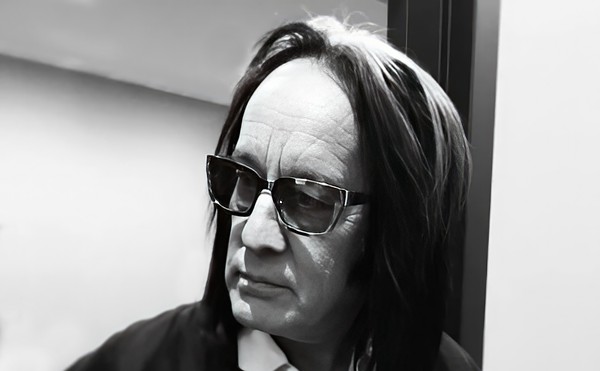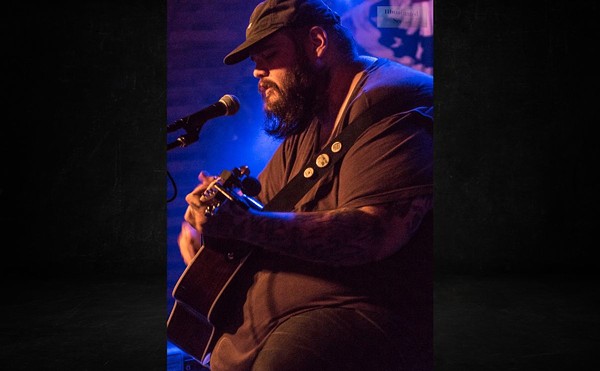It was the summer of Woodstock. A few weeks after the epic concert in 1969, its counter-culture musical vibe came to Cincinnati with the opening of Ludlow Garage at 346 Ludlow Ave. in Clifton. The club even had pieces of the original Woodstock sound system.
Cincinnati had never seen any thing like it and hasn’t since. It likely won’t again.
Open for less than two years, the concert hall brought to town the best of the exploding Rock scene that represented a creative burst not yet repeated in music history. It earned the reputation as the “Fillmore of the Midwest.”
At the time it was one of just a handful of Hippie Rock palaces in the country that started springing up, mimicking Bill Graham’s Fillmore East and West. This time Mark Twain was wrong: Thanks to the Ludlow Garage, Cincinnati was at the heart of the day’s alternative music world.
The Ludlow Garage legacy will get a 40th anniversary tribute Friday night at the Cincy Blues Fest with a stage featuring artists who played at the venue. They include The Goshorn Brothers (Pure Prairie League) and the reunion of two local Psychedelic bands of the day, Balderdash and Bitter Blood Street Theatre.
Also on the bill are No Saints No Saviors, an Allman Brothers tribute group featuring guitarist Sonny Morman and keyboardist Bob Nave. Nave played the Garage when he was with The Lemon Pipers. The Allmans immortalized the venue with their Live at Ludlow Garage album.
A two-CD/one-DVD set called Still Truckin’ will be released this weekend featuring 25 cuts of bands recorded live at the Garage. The never-before-released recordings are sure to draw national attention as a must-have for music lovers of the period.
Ludlow Garage Photos and Posters
The origins of the Garage actually began in 1967, and its story is also that of Jim Tarbell, who started the club. Tarbell went on to become a restaurateur (Grammer’s and Arnold’s), a city councilman and vice mayor. Back in ’67 he was a youth counselor working for the city.
Tarbell figured that one way to keep the baby-boomer youth out of trouble and off the streets was to put on a show. So he booked up-and-coming Psychedelic group Vanilla Fudge in an abandoned church in Hyde Park. Soon he offered a steady diet of bands, mostly local acts like Balderdash and Larry Goshorn’s Sacred Mushroom.
[Pictured from the day are Larry Goshorn (left at top of page) and Jim Tarbell.]
Meanwhile, Tarbell went to San Francisco, explored the hippie scene and its music and attended shows at the Fillmore and Avalon Ballroom. He liked one band so much he booked them for his youth concerts: The Grateful Dead.
“It was their first tour out East,” Tarbell says. “I kind of thought these guys might be big some day. The concert was fine, but I think somewhere in Hyde Park there is still a woman writing complaint letters to the city.”
Tarbell realized his youth concerts were such a hit that he needed a larger space. He leased an abandoned auto repair shop in Clifton and began the task of cleaning up years of grease and grime.
The opening of Ludlow Garage was delayed several weeks in Tarbell’s battle with Cliftonites who were opposed to a Rock club in the quiet neighborhood.
“Let’s say there was some lack of communication as to the purpose of the venue,” Tarbell says. “Translation: They feared a deluge of pot-smoking, long-haired, promiscuous, free-love hippies invading the neighborhood.”
Tarbell promised to keep the volume down. And it perhaps helped that he wasn’t going to serve liquor. He admits he probably would not have been able to get a license anyhow but insists, “I really didn’t want one. I wanted to focus on the music. The intention was for it to be a serious musical experience. Honestly, you couldn’t do a concert hall today without liquor, but we did alright.”
Indeed, due to the surreal way Tarbell designed the place, one probably didn’t need to imbibe in booze or chemicals to feel in an altered state of consciousness.
“It was a trip just getting into the Garage,” he says. “You passed through 14-foot-tall, 4-inch-thick wooden doors with 4-foot high brass handles. You are put on notice you’re going into something different. Then you walk down these huge ramps — used to get cars in and out of the basement — into a huge subterranean room where our macrobiotic food booths were. Then you go up a winding staircase to the upper level where the concert hall was.”
Once inside the cavernous 10,000-square-foot room, which could hold 1,200 people, there was an Alice in Wonderland quality.
“We had 8-foot-tall high chairs that would hold four people,” Tarbell says. “Going to the men’s room, you walked into a giant Quaker State oil can. The ladies room was Penzoil. I found all these reproduction oriental rugs for people to sit on.”
The Sept. 19, 1969, grand opening featured Grand Funk Railroad. What followed was a “who’s who” of the late ’60s progressive Rock “underground” scene: Spirit, Santana, Elvin Bishop, The Kinks, Humble Pie, Sons of Champlin, Cold Blood, Boz Skaggs, James Gang, Bo Didley, Iggy and the Stooges, MC5 and Fairport Convention.
And there were the Allman Brothers. The band had a special relationship with the Garage after playing its first show north of the Mason Dixon line there Dec. 19, 1969. The band returned two more times in what would prove to be a tune-up for its huge breakthrough concert and album, Live at the Fillmore.
The Allmans were recorded at the Garage a year before the Fillmore set. Finally in 1991 Polydor Records released Live at Ludlow Garage.
This week’s release of live recordings from the Garage wonderfully captures the era’s diverse musical spirit. There’s a trippy, improv feel on almost all the tracks from such artists as Santana, Taj Mahal, NRBQ, Commander Cody, Herbie Mann and the Staple Singers. And there’s a haunting version of the Allman Brothers’ “Dreams” with Duane Allman flashing his finest otherworldly guitar licks.
“I refer to it as hippie dance music,” says Jeff Siereveld, the CD’s co-producer. “You will hear little commercial beat. It was there to make you feel good.”
Siereveld worked at the Garage as what we might now call an intern. He was a neighborhood kid who hung out and did odd jobs because “we just wanted to be part of the culture and the Garage was where it was happening.”
He ended up running the soundboard many nights. He notes that almost all the Garage concerts were recorded on then state-of-the-art eight-track equipment.
“The tapes have been shifted from person to person over the years,” Siereveld says. “Some have been lost. B.B. King was stolen right out of the office the night he played and has never been recovered.”
The CD package includes a DVD of reminiscences from Alice Cooper and The Allman Brothers recorded as part of a 25th anniversary project (Alice reveals he wrote “Eighteen” backstage at the Garage late one night after a concert.) Profits from the CD will benefit the Blues in the Schools program and the Play It Forward organization, which helps musicians lacking health insurance.
It seems all clubs have their own life cycle dependent on trends and consumer whims. For the Ludlow Garage it was about 18 months.
By 1971 the scene had changed. The cultish, hippie music had gone mainstream, its artists moving to the big arenas. Tarbell had booked Cream to play the Garage, for example, but the band got so big so fast it canceled, moving right to the big halls.
The average Garage ticket was around $3 and up to $5 for the big acts. Tarbell says to have kept booking what bands were suddenly demanding, he would have had to charge the “ridiculous” price of $20 for a ticket.
“The Garage shows were always well-attended,” he says. “But when the music started to evolve into the big arenas, it was a whole different thing. Too commercial. I had no interest in that. I closed the Garage."
THE LUDLOW GARAGE 40TH ANNIVERSARY TRIBUTE takes place at 6 p.m. Friday at Sawyer Point as part of the CINCY BLUES FEST. Get details about both days of the Blues Fest here.





